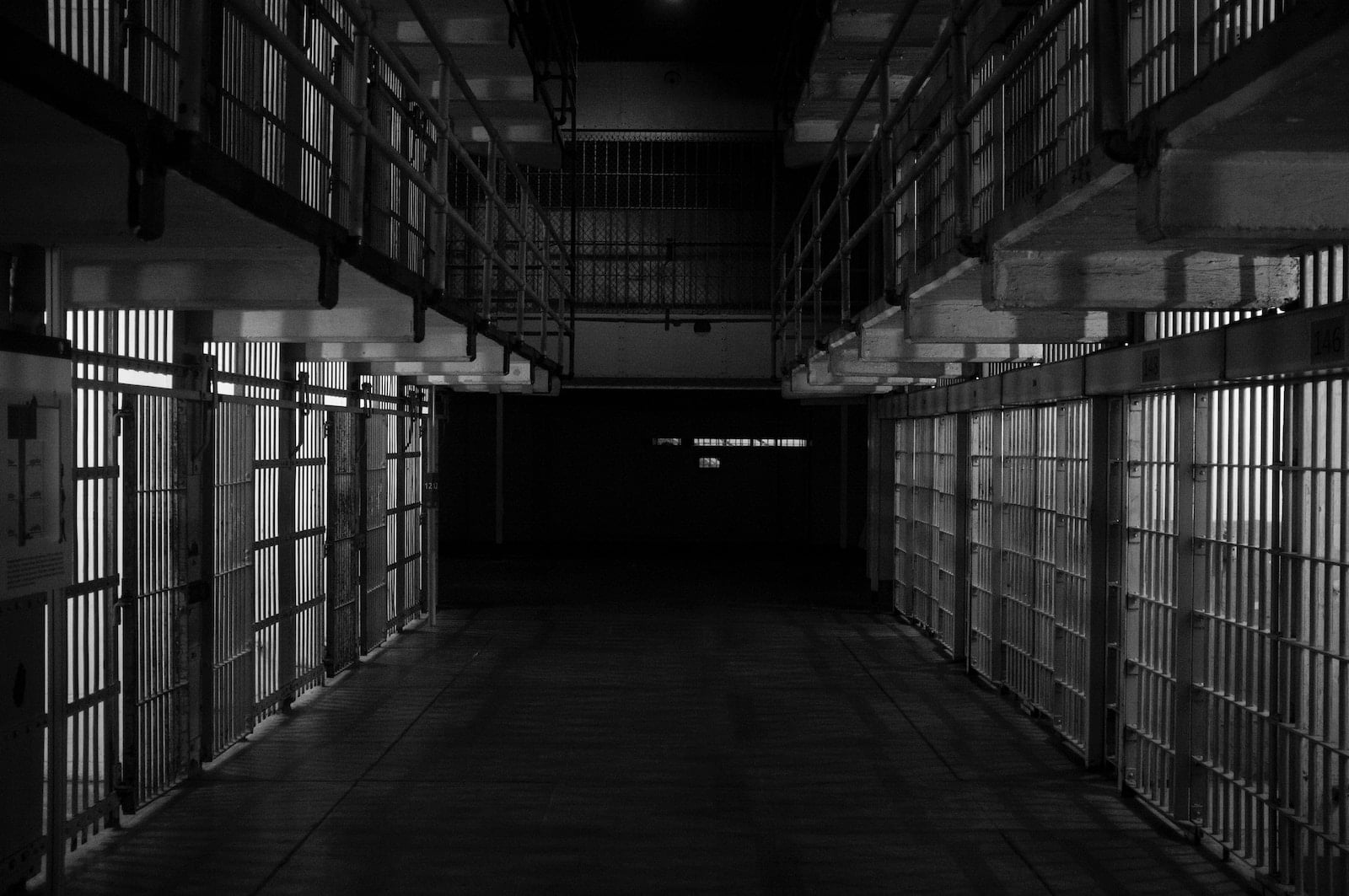Immigration detention is a topic that has garnered significant attention in recent years, as policies and regulations surrounding the topic continue to evolve. As you may know, immigration detention centers are facilities designed to hold individuals awaiting deportation or those suspected of civil immigration violations. With the United States maintaining the largest such system in the world, it’s important to understand the facts and complexities surrounding immigration detention.
While the primary purpose of immigration detention is to enforce federal immigration laws, the facilities also serve as a place where migrants go through various legal processes. Detained immigrants face a multitude of challenges, ranging from understanding complex legal procedures to dealing with issues related to human rights and personal well-being. This article aims to provide concise and accurate information on the topic, while maintaining a neutral and clear perspective.
Key Takeaways
- Immigration detention centers are designed to enforce immigration laws and hold individuals awaiting deportation or facing civil immigration violations.
- Detained immigrants navigate various legal processes while dealing with challenges related to human rights and personal well-being.
- The United States maintains the largest immigration detention system in the world, making it crucial to understand the complexities and facts surrounding the topic.
Understanding Immigration Detention
ICE and Its Role
Immigration detention is the practice of incarcerating immigrants while they await a determination of their immigration status or potential deportation. In the United States, the primary agency responsible for immigration detention is the Immigration and Customs Enforcement (ICE) under the Department of Homeland Security. You may have heard that the immigration detention system in the US is one of the largest in the world, detaining nearly 250,000 people in the Fiscal Year (FY) 2021.
You should know that ICE operates a vast network of detention facilities, which are designed to hold individuals awaiting deportation or those suspected of visa violations, illegal entry, or other civil immigration violations. These facilities are often criticized for their management practices and conditions inside.
Migration Patterns and the US Border
In order to understand immigration detention, it’s important to grasp the underlying migration patterns that lead individuals to cross the US border. The increase in detention rates can be attributed to federal immigration enforcement policy changes over the past several decades. For example, in 1973, there was a daily average of 2,370 detained migrants, which ballooned to 55,000 by 2019.
Factors contributing to migration include violence, political instability, and economic hardships in the immigrants’ countries of origin. As a result, people from Central and South America, Africa, and Asia have been risking the dangerous journey across the US border in search of a better life.
While navigating the complexities of the immigration detention system, it’s essential to remain confident, knowledgeable, neutral, and clear in your understanding of the issues at hand. Remember that this is an ongoing, evolving situation that requires a deep comprehension of both the past and present factors shaping immigration detention in the United States.
Detention Facilities
Public and Private Facilities
In the United States, immigration detention facilities are operated by both public and private entities. U.S. Immigration and Customs Enforcement (ICE) manages the civil immigration detention system, maintaining a network of facilities designed to hold individuals awaiting deportation, as well as those suspected of visa violations, illegal entry, or other civil immigration violations.
Some detention facilities are run by private corporations, while others are operated by local law enforcement agencies through intergovernmental service agreements (IGSAs). These partnerships have allowed for the expansion of the detention system and its capacity.
Conditions Inside the Facilities
Detention facilities can vary greatly in terms of size, amenities, and living conditions. While many facilities implement guidelines like the Performance Based National Detention Standards (PBNDS), there have been numerous reports of overcrowding, inadequate healthcare, and unsatisfactory conditions within certain facilities.
You may encounter the following challenges within such facilities:
- Overcrowding: Some facilities may lack sufficient space to comfortably house the detainee population, resulting in cramped and uncomfortable living conditions. This can exacerbate health and safety concerns within the facility.
- Access to healthcare: Limited access to medical care can be a significant concern in detention facilities. Delays in treatment, understaffed medical units, and lack of specialized care have been reported in certain facilities.
- Mental health challenges: The stress and uncertainty of the detention experience can have severe impacts on detainees’ mental health, with limited access to mental health support services in some cases.
Understanding the realities of immigration detention is essential for navigating the complex system and advocating for reforms to improve conditions for detainees. It’s crucial to be aware of the conditions inside these facilities and to know your rights and resources if you or a loved one find yourself in such a situation.
Legal Processes in Immigration Detention
As someone seeking to understand the legal processes in immigration detention, you should be aware of several key aspects: asylum claims and procedures, the role of lawyers in the process, and bonds and bond hearings.
Asylum Claims and Procedures
If you find yourself in immigration detention, you may have the option to seek asylum in the United States. As an asylum seeker, you must have a well-founded fear of persecution in your home country due to race, religion, nationality, political opinion, or membership in a particular social group. Your asylum claim usually begins when you submit an affirmative application to the United States Citizenship and Immigration Services (USCIS) or during your defensive application in immigration court.
While detained, you can expect to undergo a Credible Fear Interview. An asylum officer will determine if your claim has merit. If you pass the interview, you can proceed with the asylum process and have your case heard before an immigration judge. However, if you fail the interview, you may face deportation.
Role of Lawyers in the Process
Having legal representation during immigration detention is crucial. Unlike the criminal justice system, where you have the right to an attorney, in civil immigration proceedings, you have the right to hire an attorney at your own expense. Dual representation, both for your asylum claim and to fight the arrest and detention, is an essential consideration.
Experienced immigration lawyers can assist you in navigating the complex legal system, presenting your case effectively, and potentially securing your release from detention. They can also help you gather evidence and prepare you for interviews, bond hearings, and court appearances, improving your chances of a positive outcome.
Bonds and Bond Hearings
In some cases, individuals in immigration detention may be eligible for release on bond. The bond is a payment made to the Department of Homeland Security (DHS) as a guarantee that you will attend all required hearings and comply with any orders issued by the immigration court.
A bond hearing is a crucial step in this process. The immigration judge evaluates your eligibility for bond based on factors such as your criminal record, family ties in the United States, and flight risk. It is essential for your legal representation to present a strong case for your eligibility, ensuring the best chances for your release.
Overall, understanding the intricacies of the legal processes in immigration detention is vital. Be sure to pay close attention to asylum claims and procedures, the role of lawyers in the process, and bonds and bond hearings to navigate this complex system successfully.
Challenges Faced by Detained Immigrants
Care and Treatment Issues
When you find yourself in an immigration detention facility, there are several care and treatment issues you might face. While these centers are designed to hold individuals awaiting deportation and those suspected of immigration violations, the standard of care can differ across facilities. Access to health services often varies, leading to disparities in the quality of care provided. Additionally, asylum seekers may struggle to navigate the legal process, especially when they lack access to proper legal counsel. This lack of representation increases the risk of prolonged detention and unlawful deportation.
Medical Neglect in Facilities
Medical neglect is a critical issue in immigration detention facilities, as it can have severe consequences on your physical and mental health. In the United States, there have been numerous cases of individuals suffering from inadequate medical care while detained. This includes delayed treatment, misdiagnosis, and a lack of referral to appropriate specialists. Moreover, the management of mental health is often overlooked, contributing to deteriorating conditions for those who need support and access to mental health resources.
Handling Vulnerable Populations
Immigration detention centers often house individuals with varying needs and vulnerabilities, such as asylum seekers, women, children, and individuals with disabilities. These populations face unique challenges during their time in detention. For instance, families can be separated, leading to further trauma and emotional distress. Moreover, people with physical or mental health needs might not receive adequate care and accommodations. Paying attention to the rights and welfare of vulnerable populations is essential to achieving more humane and fair treatment for all detainees.
In summary, if you find yourself in an immigration detention facility, it’s essential to remain aware of the potential challenges you may face concerning care and treatment, medical neglect, and the handling of vulnerable populations. Remember that knowledge is power, and being well-informed can help you advocate for your rights and navigate the complex world of immigration detention.
Detention Policies and Regulations
Comparisons with Criminal Incarceration
In the realm of immigration detention, it’s important to understand the differences between this system and criminal incarceration. While both involve confinement, immigration detention is designed for holding individuals awaiting deportation or those suspected of visa violations, illegal entry, or other civil immigration violations, rather than for enforcing criminal punishment .
During the Trump administration, there was a notable increase in the daily number of individuals detained, exceeding 52,000 in 2019 . Your awareness of these comparisons is crucial for grasping the full scope of immigration detention.
Customs and Border Protection (CBP) Enforcement
CBP enforcement and its impact on non-citizens is another significant aspect of immigration detention policies. The CBP is responsible for securing the United States borders and enforcing immigration laws. Consequently, many individuals end up in their custody while their cases are being reviewed.
Understanding your rights while under CBP’s authority is essential, especially if you are a non-citizen facing potential detention. Keep in mind, however, that human rights abuses have been reported in some instances .
Office of Refugee Resettlement
Lastly, the role of the Office of Refugee Resettlement (ORR) in immigration detention policies is noteworthy. As a part of the Department of Health and Human Services, the ORR is responsible for helping refugees and unaccompanied minors who enter the United States without their parents . This organization plays a critical role in providing assistance and temporary housing for these vulnerable individuals.
You should be familiar with the ORR’s duties and responsibilities, as they offer essential support and resource allocation for those in need. As with any government agency, ensuring compliance with human rights standards and proper treatment of individuals in custody is paramount.
By exploring these vital aspects of immigration detention policies and regulations in the United States, you can stay informed and knowledgeable about this vital issue.
Frequently Asked Questions
What is the purpose of immigration detention centers?
Immigration detention centers serve as temporary holding facilities for individuals awaiting the outcome of their immigration proceedings. They are meant to ensure compliance with immigration laws and are not intended to be punitive. However, they have often been criticized for their conditions and treatment of detainees.
What are the conditions in immigration detention centers?
Conditions in immigration detention centers can vary, but many reports have cited issues such as overcrowding, lack of medical care, and poor sanitary conditions. Detainees and their advocates have frequently alleged inhumane treatment, violations of due process, and various types of abuse in these facilities.
How many immigration detention centers are there in the United States?
The number of immigration detention centers in the United States can fluctuate due to varying government contracts and facility usage. However, the U.S. Immigrations and Customs Enforcement (ICE) agency oversees hundreds of facilities, including both government-operated and privately contracted centers.
What happens when someone is detained at the border?
When someone is detained at the border, they are typically taken into custody by U.S. Customs and Border Protection (CBP) agents and, depending on their circumstances, may be transferred to an immigration detention center. The individual will then undergo processing, which involves collecting biographical information, identifying any potential legal claims for staying in the United States, and determining whether they should be detained or released pending their immigration proceedings.
What are the current statistics on immigration detention?
As of July 2023, exact statistics on immigration detention fluctuate daily. However, recent reports have stated that the U.S. government detains tens of thousands of people each day in immigration detention. These figures encompass a diverse range of people, including asylum seekers, individuals with prior removal orders, and those apprehended at the border with no legal status.
What are some issues related to immigration detention policies?
Some of the key issues related to immigration detention policies include the use of lengthy or indefinite detention, the reportedly poor conditions within detention facilities, and the lack of adequate legal representation for detainees. Additionally, concerns have been raised about the costs associated with maintaining detention centers, as well as the effects of detention on the mental and physical health of those detained.






